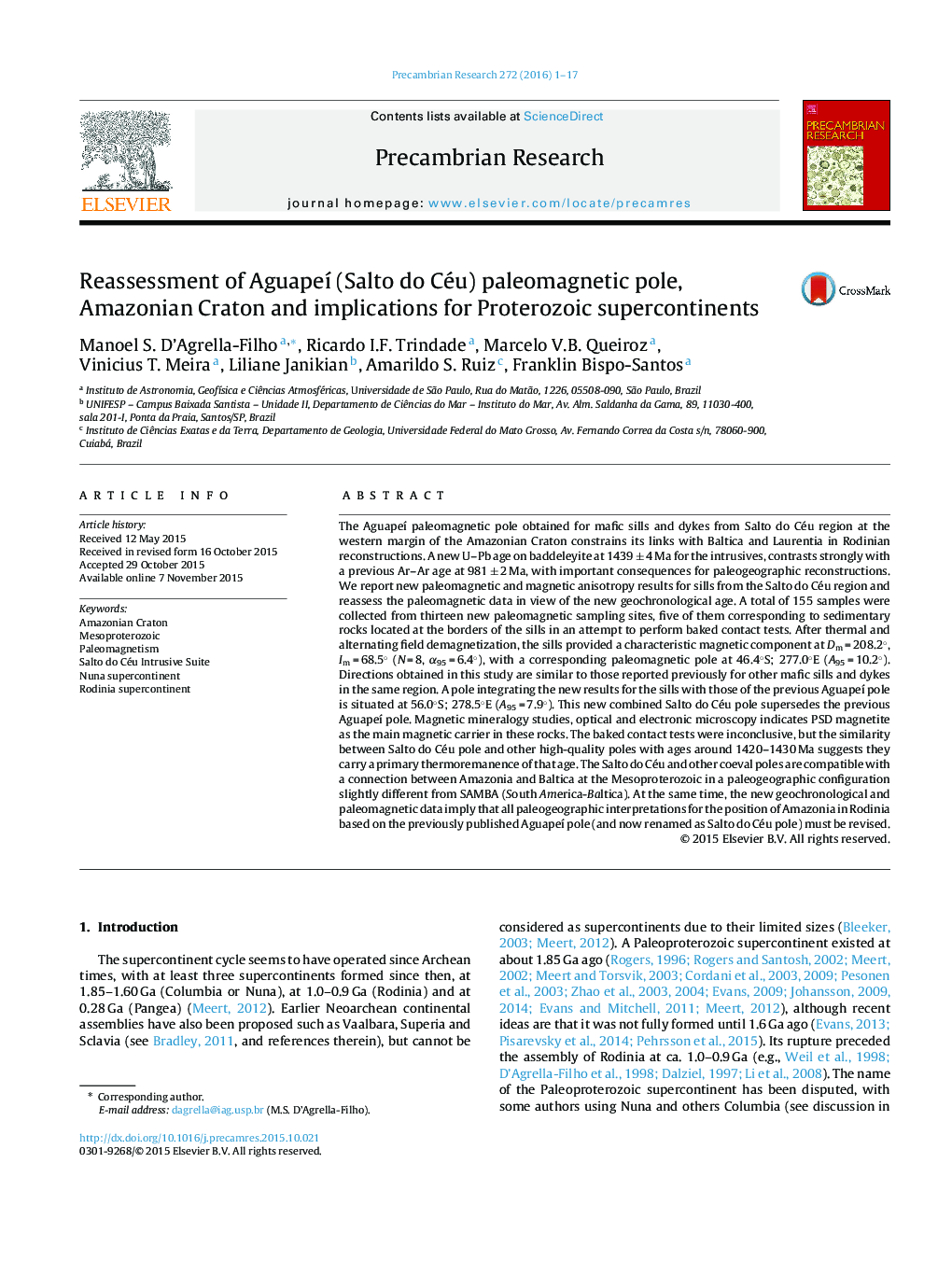| کد مقاله | کد نشریه | سال انتشار | مقاله انگلیسی | نسخه تمام متن |
|---|---|---|---|---|
| 4722433 | 1639603 | 2016 | 17 صفحه PDF | دانلود رایگان |

• Paleomagnetic results of well-dated 1440 Ma mafic sills from the Amazonian Craton.
• Aguapeí and Vale da Promissão poles are reassessed based on new paleomagnetic and geochronological data.
• The Rodinia reconstruction based on previous results must be reviewed.
• New Salto do Céu pole is compatible with a paleogeography slightly different from SAMBA.
The Aguapeí paleomagnetic pole obtained for mafic sills and dykes from Salto do Céu region at the western margin of the Amazonian Craton constrains its links with Baltica and Laurentia in Rodinian reconstructions. A new U–Pb age on baddeleyite at 1439 ± 4 Ma for the intrusives, contrasts strongly with a previous Ar–Ar age at 981 ± 2 Ma, with important consequences for paleogeographic reconstructions. We report new paleomagnetic and magnetic anisotropy results for sills from the Salto do Céu region and reassess the paleomagnetic data in view of the new geochronological age. A total of 155 samples were collected from thirteen new paleomagnetic sampling sites, five of them corresponding to sedimentary rocks located at the borders of the sills in an attempt to perform baked contact tests. After thermal and alternating field demagnetization, the sills provided a characteristic magnetic component at Dm = 208.2°, Im = 68.5° (N = 8, α95 = 6.4°), with a corresponding paleomagnetic pole at 46.4°S; 277.0°E (A95 = 10.2°). Directions obtained in this study are similar to those reported previously for other mafic sills and dykes in the same region. A pole integrating the new results for the sills with those of the previous Aguapeí pole is situated at 56.0°S; 278.5°E (A95 = 7.9°). This new combined Salto do Céu pole supersedes the previous Aguapeí pole. Magnetic mineralogy studies, optical and electronic microscopy indicates PSD magnetite as the main magnetic carrier in these rocks. The baked contact tests were inconclusive, but the similarity between Salto do Céu pole and other high-quality poles with ages around 1420–1430 Ma suggests they carry a primary thermoremanence of that age. The Salto do Céu and other coeval poles are compatible with a connection between Amazonia and Baltica at the Mesoproterozoic in a paleogeographic configuration slightly different from SAMBA (South America-Baltica). At the same time, the new geochronological and paleomagnetic data imply that all paleogeographic interpretations for the position of Amazonia in Rodinia based on the previously published Aguapeí pole (and now renamed as Salto do Céu pole) must be revised.
Comparison of the 1420–1460 Ma paleomagnetic poles from Amazonia, Baltica and Laurentia considering different reconstructions of Nuna (Columbia).Figure optionsDownload as PowerPoint slide
Journal: Precambrian Research - Volume 272, January 2016, Pages 1–17